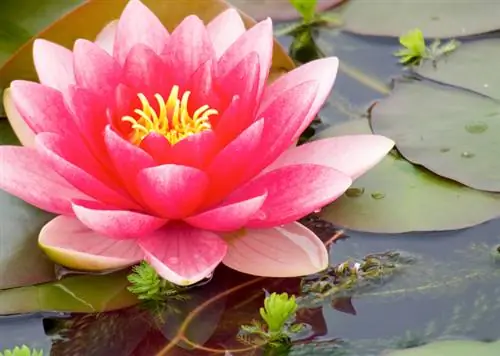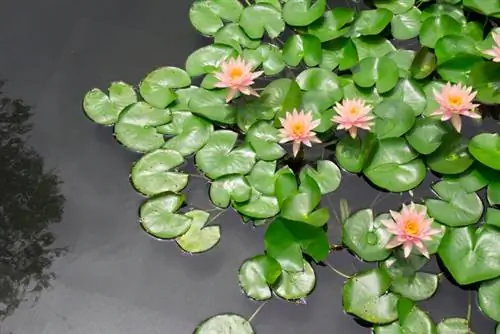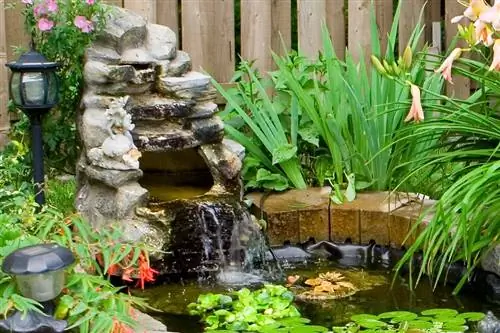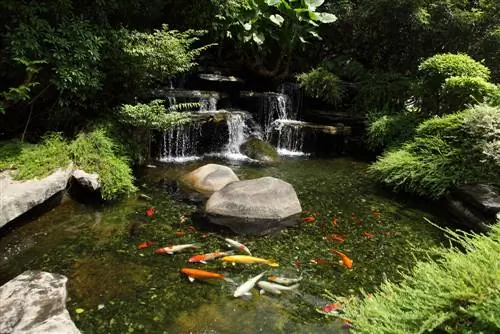- Author admin [email protected].
- Public 2023-12-16 16:46.
- Last modified 2025-01-23 11:21.
PVC is the standard material when it comes to pond liners - it is the most commonly used. The individual PVC sheets must be connected completely tightly to one another. You can read exactly how this works and how to do it correctly in our article.
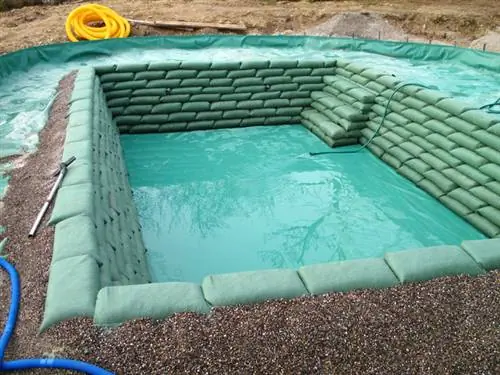
How to glue PVC pond liner correctly?
To stick PVC pond liner, the liner must first be cleaned and dried. Glue is then applied according to the manufacturer's instructions, the film strips are glued together and weighted down on a solid surface. Finally, the seams are sealed, avoiding the formation of waves.
Disadvantages of PVC films
If you choose a PVC pond liner, you should keep some of the disadvantages in mind:
- As a rule, “sandwich films” made of two different materials are necessary because single-layer PVC has poor properties
- The environmental balance of PVC is simply extremely bad
- The disposal of PVC is hardly possible in an ecologically safe way
- There may be fumes (although most films are harmless today)
- The film is not really ideal for creatures in the pond
If you want to use a high-quality pond liner, you should therefore take a look at the EPDM films.
Need to glue
As a rule, you don't have to glue much to the pond itself. Pond liners are welded in the factory using special equipment. You can simply order the film from the dealer in the required dimensions.
If you build your pond yourself and use foil strips, you often have to weld these individual foil strips yourself. To do this, the liner sometimes has to be adjusted on the pond itself - in this case, adhesive techniques are used, as well as to repair damaged liner.
Please also note thatRepairs gluing will hardly be successful after just a few years. In this case, gluing can usually no longer be used as a repair method for PVC films.
Procedure for gluing
The PVC film must always be thoroughly cleaned and dried first (when carrying out repairs). The application of the glue and the bonding must always be carried out according to the instructions of the glue manufacturer. Work very carefully here, When gluing, the film must be on a solid surface. After gluing, you should definitely weigh down the seam with sandbags. After gluing, the seams still need to be sealed.
Wave formation in the film must be avoided at all costs - which in practice is not always easy, especially with larger sections that you want to glue.
Tip
EPDM films are also easy to repair if they are damaged. This will continue for years and even with liquid pond liner that you simply pour onto the liner. Alternatively, use rubber glue and rubber tape for easy repairs.


